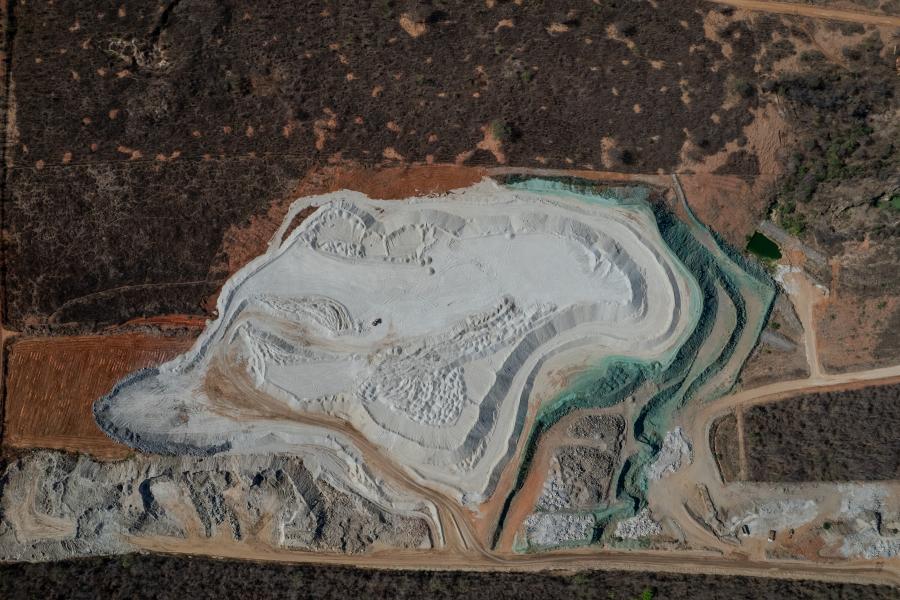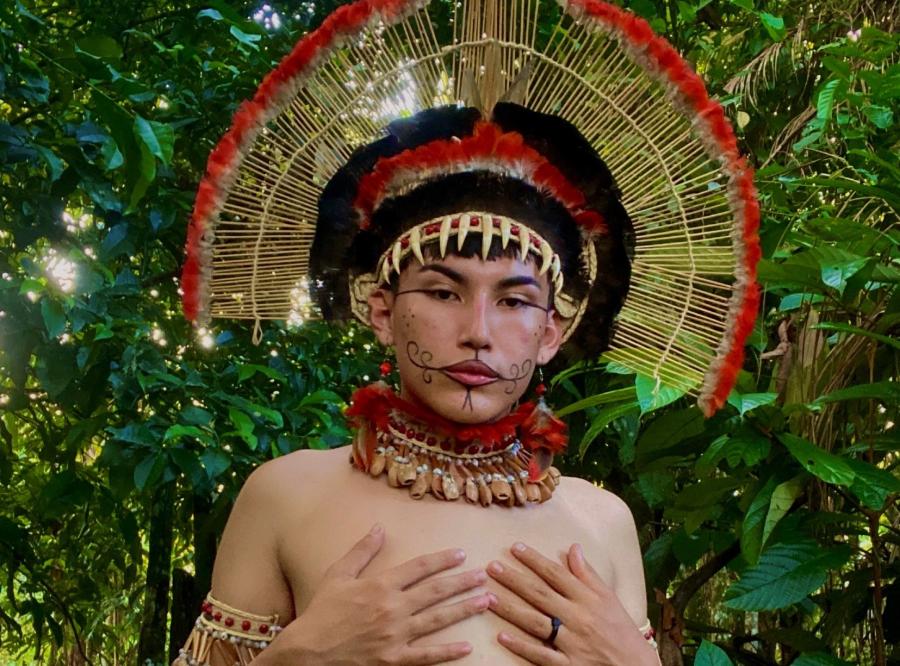Introduction
The Uanano Indians of the Uaupes River basin in the northwest portion of the Brazilian Amazon rain forest practice an important strategy of river management. By reserving the natural vegetation of the riparian forest for fisheries maintenance rather than deforesting the margin for agriculture as is common elsewhere, this strategy demonstrates an unusual awareness of the interdependence of terrestrial and aquatic systems only recently documented by Western scientists and not yet fully recognized by economic developers. It is presented here as an example of rational ecosystem management with long-term economic benefits.
Aspects of the Blackwater River Ecosystem
The Uaupes, a tributary of the Rio Negro, is a blackwater river. The ecology of blackwater rivers differs from temperate aquatic systems. In temperate climates, the base of the food chain is usually micro flora, produced by photosynthetic and chemosynthetic action on nutrients in the water. Early researchers were faced with the apparent paradox that many Amazonian rivers, while containing both low levels of nutrients and low in situ production of primary phytoplankton, nonetheless support flourishing fish populations.
Food supplies in blackwater rivers come from external sources. River margins provide food for fish - vegetable matter such as leaves, fruits, flowers, seeds, and microflora, and numerous animal forms such as insects, insect larvae, arachnids, crustaceans, and worms. This food enters the river as floating and decomposed matter and mud.
Water levels fluctuate with seasonal rain. When flooding peaks, waters overspill their banks merging aquatic and terrestrial zones, and allowing fish into the flooded forests to feed. Some of the fish populations of these rivers have evolved to exploit increased numbers of foods available during floods and to store these energy reserves as fatty deposits.
The Uanano
The Uanano number some 1600 persons and are one of fifteen to twenty indigenous groups inhabiting the Uaupes river basin in northwest Amazon. They live in dispersed settlements along the main channel of the middle Uaupes. These settlements, located at 5 kilometer intervals, range in size from 35 to 165 people.
Uanano diet is derived principally from fishing and horticulture although wild animals, fruits, and insects provide a smaller, though important, portion. Gardens are small (approximately 3500 square meters), of short duration, widely separated, and always located in the forest interior. Forests along the rivers are never cultivated because they are considered part of the aquatic system. Specifically, they are seen as providing food for the fish upon which people depend.
The Uananos are acutely aware of the importance of food sources from the adjacent forest in maintaining fisheries. Apart from small clearings for habitation, they prohibit deforestation at the river margin because they fear a subsequent reduction in the fish population.
The Uananos see themselves in a universe ordered into sibling units classifying humans, animals, and plants. Relations between members of these groups have limits within which each group can impinge upon others. No action occurs without a counter-action however: man does not act upon nature without repercussions. Nature is abstracted as a series of brothers, reactive and generous when treated with respect, but vengeful and punitive when treated with arrogance. Although one natural class may eat of another class, it must compensate in some way for the reduction in the other group's members. For example, the taking of an animal life is compensated by the taking of a human life.
As kinship groups, the forest and fish are socially ordered and structured in ways that parallel the social hierarchy of the Uanano tribe's own sibling units, governed by a "head," also called an "oldest brother." The fish are conceived as both protective of their own and vengeful of the unwarranted interference of outsiders. Peaceful, ordered exchange, consistent with law, is tolerated, i.e., fishing for subsistence after a compensatory offering has been made. But unlawful, gluttonous interference is avenged by dangerous, fish guardian elders. Relations between man and the natural world are harmonious so long as the proper limits are maintained.
The ideology of reciprocity sets behavioral norms and constraints. This is illustrated in the interplay of fishing beliefs and practices. The Uanano describe fish spawning as a fruit-exchange dance. Any interruption of these dances or interference in the supply of fruits requisite to them is severely punished by retribution of the fish elders. While the adult fish are caught as they swim back from the "dances," in exchange, the Uananos protect the offspring and preserve their food source - the forest. The Uanano depend upon the generosity of the fish and the forest and avoid offending them.
Economic Evaluation of Margin Conservation
The Uanano preservation of margin wildlife for fisheries maintenance is in conflict with the widespread trend among developers to utilize this area for agriculture. What are the relative economic benefits of either approach?
Uaupes soils, podsols and latosols, are eroded from the ancient Guyana Shield through which the Uaupes River flows. These soil types are typical of blackwater areas.
Podsols result from intense weathering of soils in a strongly acid medium. Leaching removes soluble minerals leaving the soil high in aluminum and iron compounds. The unweathered surface material is a white sand, devoid of important nutrients such as nitrogen and phosphorous.
Latosols are weathered soils rich in iron. When exposed to repeated drying and moistening, the iron segregates, forming nodules and concretions which cement to a rock-like hardness known as laterite.
These soils' principal source of nutrients is derived from the accumulation of leaf fall and other debris from the forest. Upon clearing, nutrients are quickly eroded. Uanano garden yields dramatically decline after the first planting.
Thus, to remove the forest cover is to remove the nutrients of both the terrestrial and aquatic systems. Without the leaf litter from the forest, the soils become either white sands or brick-like laterites, both inhospitable to agriculture. Finally, were the forest margin to be denuded for agriculture, these soils would quickly erode, altering the river channel and depositing silt in the river.
In blackwater areas, floodplains are not replenished annually by flooding, as they are on whitewater rivers. Instead, through flooding, the aquatic system is replenished by the forest.
Agriculture is a short-lived phenomenon in deforested blackwater regions because nutrient supply is quickly exhausted. Greater protein yields per hectare from blackwater areas are obtained by maintaining the forest as a grazing ground for fish. For the Uanano, forest maintenance and restricted fish harvesting makes a potentially sterile system relatively productive.
Article copyright Cultural Survival, Inc.



